Markets
White House to Scale Back Tariffs, Bitcoin Gains on Eased Economic Jitters
Published
6 days agoon
By
admin
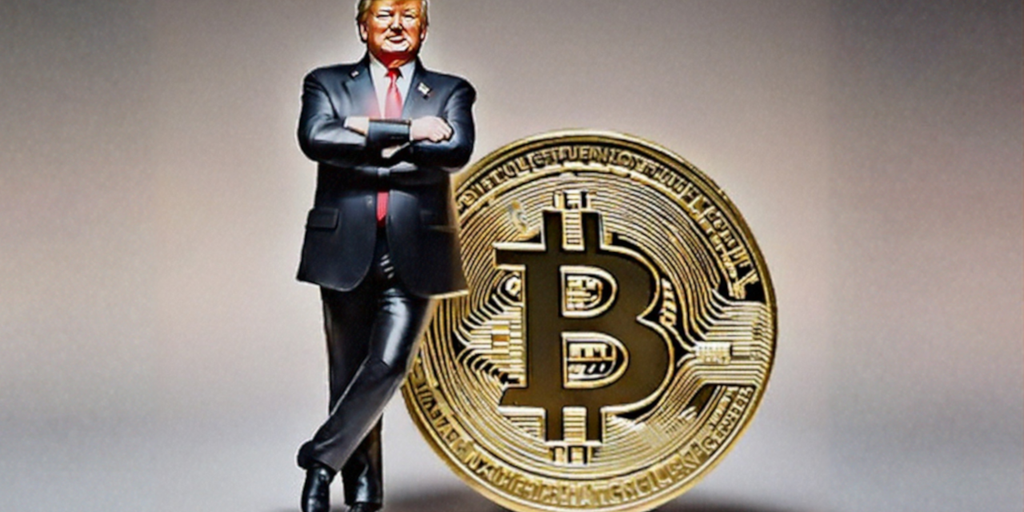
Bitcoin regained momentum Sunday and nudged up by as much as 2.7% following reports that the White House has signaled a more targeted approach to its April 2 tariffs, confirming it would likely omit sector-specific duties while still implementing “reciprocal tariffs” on major trading partners.
The crypto market saw higher gains amid reports on Sunday afternoon from Bloomberg and the Wall Street Journal that Trump’s administration is narrowing its tariff strategy.
Bitcoin traded above $86,700 by Sunday midnight, roughly twelve hours after the aforementioned reports emerged, showing resilience after volatile swings over the past week, which saw lows of $81,200.
The alpha crypto is up 3.3% on the day, while the rest of the market has tracked up by 0.7% in total market cap, data from CoinGecko shows.
This shift from a broader tariff implementation to a more targeted approach has eased concerns about immediate economic disruption.
Previous market fears had centered on Trump’s declaration of April 2 as “Liberation Day,” when he planned to impose sweeping tariffs across multiple sectors.
Citing Treasury Secretary Scott Bessent’s pronouncements last week, the WSJ reported that the administration is looking to have tariffs applied to “about 15% of nations with persistent trade imbalances with the U.S.”
It follows the Federal Reserve’s projections last week that it would hold interest rates steady. Meanwhile, two weeks before, the Consumer Price Index saw cooling numbers, marking 2.8% from February, which some investors are interpreting as signs of easing financial conditions.
While tariffs do not directly impact Bitcoin and broader crypto prices short-term, Zach Pandl, head of research Grayscale, previously told Decrypt Trump’s trade policies are part of a larger trend, with Bitcoin being “swept up in broader macro uncertainty.”
This suggests that “higher policy uncertainty has caused investors to reduce portfolio risk across the board,” Pandl explained.
A study from Bloomberg shows that President Trump’s implemented or threatened tariffs have affected at least $1.8 trillion in global trade, imposing 25% duties on worldwide steel and aluminum, 25% on non-compliant USMCA goods, and an additional 10% on Chinese imports.
An additional 25% tariffs on E.U. goods was also proposed. Responding to these threats and singling out Trump’s crypto initiatives, an ECB official said Sunday last week that financial crises “often originate in the United States and spread to the rest of the world.”
Meanwhile, the same study cites Bloomberg Economics forecasting a reduction in U.S. GDP by up to 0.7% while increasing inflation by 0.4%, despite Trump’s claims that the tariffs, as economic measures, are designed to curb illegal immigration and address trade imbalances.
Edited by Sebastian Sinclair
Daily Debrief Newsletter
Start every day with the top news stories right now, plus original features, a podcast, videos and more.
Source link
You may like


Nasdaq Files To Launch a New Grayscale Avalanche (AVAX) Exchange-Traded Fund


How To Measure The Success Of A Bitcoin Treasury Company


Why ‘Tiger King’ Joe Exotic Launched a Solana Meme Coin From Behind Bars


Trump pardons BitMEX, is ‘Bitcoin Jesus’ Roger Ver next?


Terraform Labs to Open Claims Portal for Investors on March 31


BitGo CEO Calls For Regulation Amid Galaxy Digital’s Settlement
Markets
Terraform Labs to Open Claims Portal for Investors on March 31
Published
6 hours agoon
March 29, 2025By
admin

Terraform Labs, the firm behind the collapsed Luna token and the TerraUSD stablecoin, will open a portal on March 31 to allow investors to file claims for crypto losses tied to the company’s downfall and subsequent bankruptcy.
The online system, operated by claims administrator Kroll, is part of the company’s court-supervised wind-down process. Investors have until April 30 at 11:59 p.m. ET to submit claims through claims.terra.money. Late submissions will not be considered, meaning those who miss the deadline forfeit their right to any recovery, according to a Medium post.
Eligible claims must be tied to specific cryptocurrencies listed in the case documents and held during the period surrounding the Terra ecosystem’s collapse. Notably, assets with less than $100 in on-chain liquidity and certain others—like Terra 2.0’s Luna—will not qualify.
Claimants must also submit proof of ownership. The preferred method is read-only API keys from exchanges, which the administrator considers more reliable than screenshots or manually uploaded documents. The post adds that those using manual evidence may face extended review periods or risk their claims being denied altogether.
Once filed, claims will be reviewed and verified. Initial decisions will be shared within 90 days after the deadline and approved claims will be eligible for pro rata distributions once processing concludes.
The Terra ecosystem collapsed in 2022, leading to the largest destruction of wealth in just three days in the cryptocurrency space’s history. LUNA’s market capitalization plunged from over $41 billion to $6 million in that period.
Read more: Terraform Labs, Do Kwon Agree to Pay SEC a Combined $4.5B in Civil Fraud Case
Source link
Markets
Solana price prepares a wild ride as risks rise
Published
12 hours agoon
March 29, 2025By
admin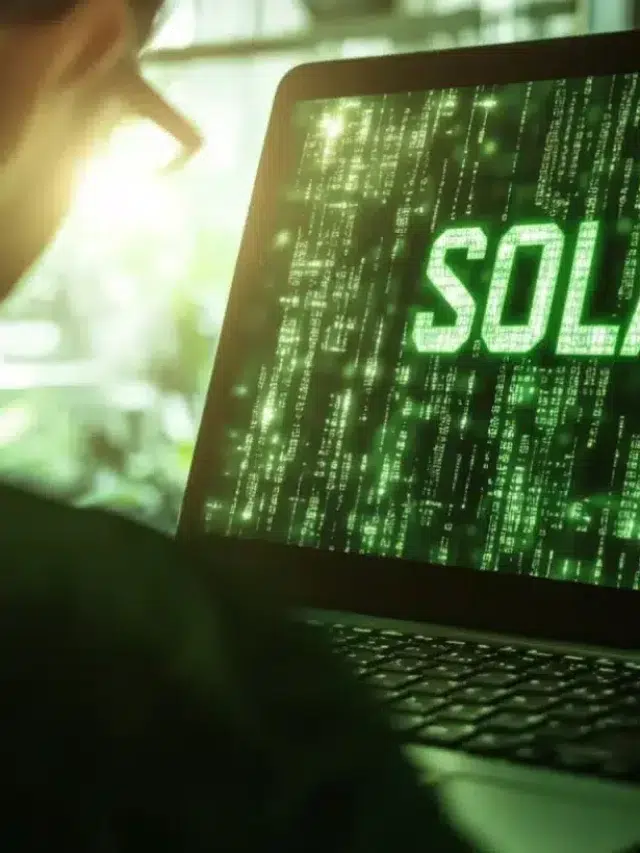
Solana price crashed for two straight days as the ongoing crypto market sell-off hit its meme coin ecosystem.
Solana (SOL) dropped to $127 on Saturday, down by 15% from its highest point this week. It has dropped to its lowest level since March 2021.
The decline happened as most Solana meme coins crashed, erasing most of the gains made earlier this week. Fartcoin (FARTCOIN) crashed by 15% on Saturday, while popular tokens like Popcat (POPCAT), ai16z (AI16Z), and Bonk (BONK) fell by over 10%.
The market cap of all Solana meme coins tracked by over 10% to $7.2 billion. This drop means that these tokens have erased over $18 billion in value in the last few days.
Third-party data shows that crypto traders bought the Solana meme coin rally earlier this week.
According to DeFi Llama, Solana’s DEX volume soared by 60% in the last seven days to over $3 billion. This volume was higher than Ethereum (ETH) and BSC, which handled $11.35 billion and $8.9 billion, respectively. It was the first time in weeks that Solana’s DEX protocols did better than the two.
Most of Solana’s DEX volume came from Pump, which handled over $2.8 billion worth of transactions. It beat other popular DEX networks like Orca, Meteora, Raydium, and Lifinity, which have long had a big market share.
Solana had some other positive news this week. The most notable one was that Blackrock, the biggest asset manager globally, expanded BUIDL, its money market fund, to the network. This is a notable development since BUIDL’s assets have surged to over $1.86 billion.
Solana price technical analysis
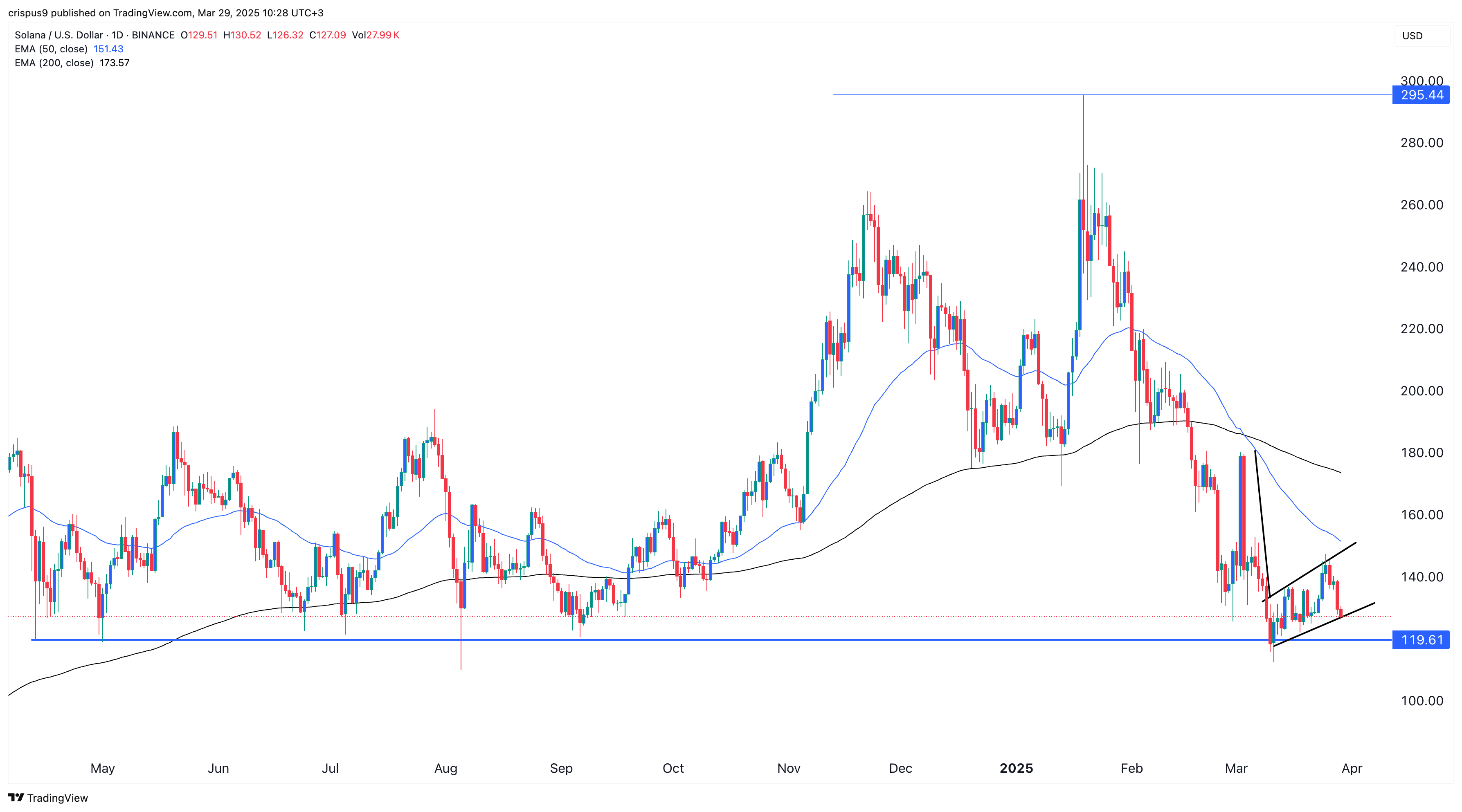
The daily chart shows that Solana coin has plunged in the past few months, moving from January’s high of $295.45 to $126. Most recently, it has formed a bearish flag pattern, which is made up of a tall vertical line and a rectangle.
Solana also formed a death cross pattern on March 4 as the 50-day and 200-day moving averages flipped each other while pointing downwards.
Therefore, a combination of a death cross and a bearish flag points to a strong breakdown, potentially to $100. For this to happen, it will need to plunge below the support at $120, where it has failed to drop below several times since April last year.
Source link
Bankruptcy
FTX to Begin $11.4B Creditor Payouts in May After Years-Long Bankruptcy Battle
Published
14 hours agoon
March 29, 2025By
admin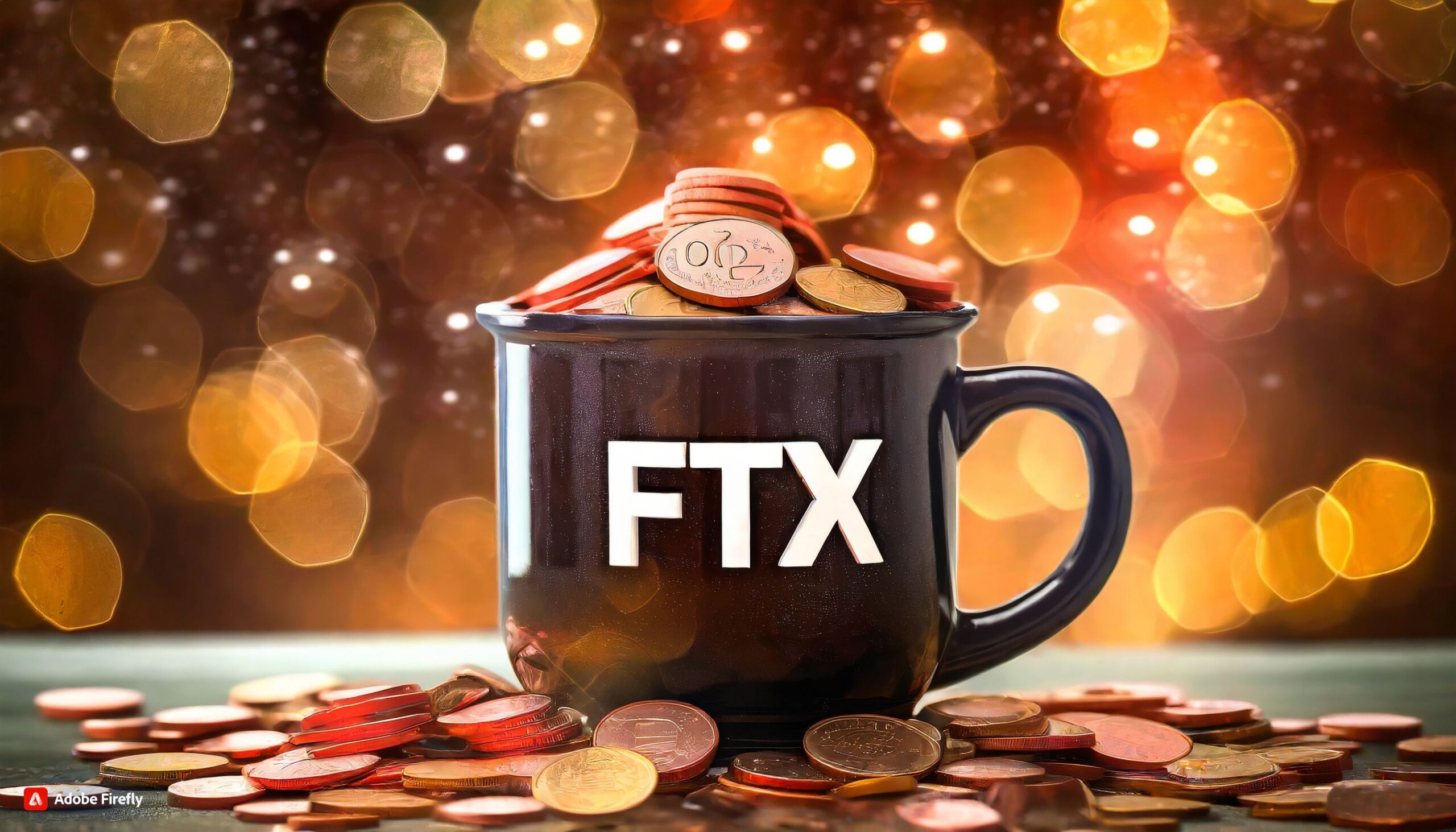
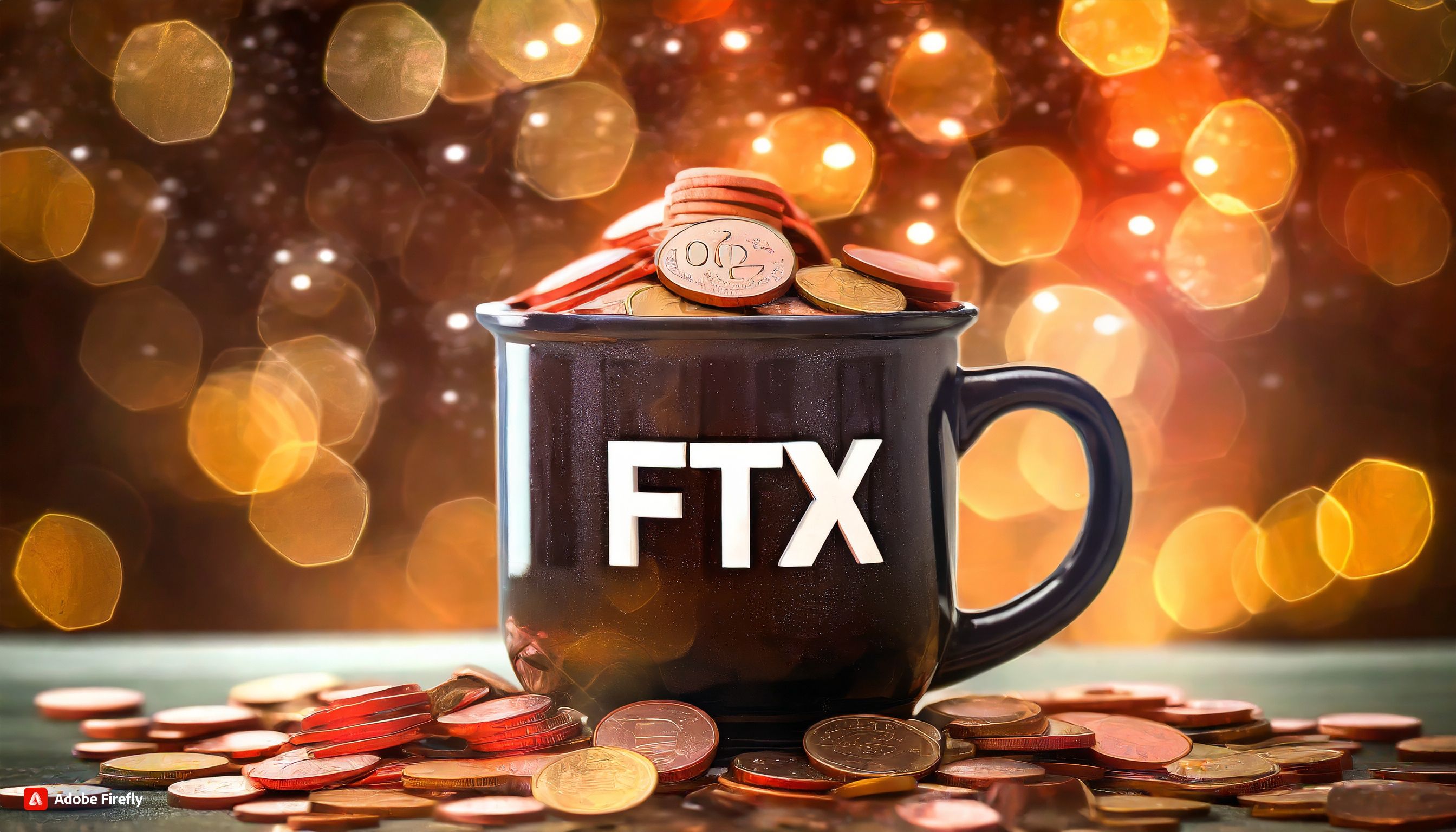
FTX, the collapsed cryptocurrency exchange once helmed by Sam Bankman-Fried, plans to begin paying its main creditors at the end of May, Bloomberg reported based on court proceedings in Delaware this week.
The company has gathered $11.4 billion in cash to distribute to thousands of parties affected by its 2022 bankruptcy, with the first payments to major creditors set for May 30.
These include institutional investors and firms that held crypto on FTX’s platform. Smaller creditors with claims below the $50,000 mark have already begun receiving distributions.
FTX’s collapse left a financial crater and a trail of frustrated creditors—many of whom expected to be repaid in crypto, not dollars. Since the bankruptcy, the price of bitcoin has more than quadrupled, intensifying frustrations among those waiting for their assets back.
The task of unwinding FTX’s balance sheet has been slowed by a large number of claims, many of them reportedly questionable. Andrew Dietderich, a bankruptcy attorney for the firm, told the court that FTX has received “27 quintillion” claims, Blloomberg reported, many of which are duplicates or outright fraudulent.
Interest payments are compounding the urgency. While FTX earns only a modest return on its cash, legitimate creditors are entitled to 9% interest annually on unpaid claims. The longer it takes to pay, the more the company could owe.
Read more: Nearly All FTX Creditors Will Get 118% of Their Funds Back in Cash, Estate Says in New Plan
Source link

Nasdaq Files To Launch a New Grayscale Avalanche (AVAX) Exchange-Traded Fund

How To Measure The Success Of A Bitcoin Treasury Company

Why ‘Tiger King’ Joe Exotic Launched a Solana Meme Coin From Behind Bars

Trump pardons BitMEX, is ‘Bitcoin Jesus’ Roger Ver next?

Terraform Labs to Open Claims Portal for Investors on March 31

BitGo CEO Calls For Regulation Amid Galaxy Digital’s Settlement

Ethereum Bulls Disappointed As Recovery Attempt Fails At $2,160 Resistance

US recession 40% likely in 2025, what it means for crypto — Analyst

Crypto Investment Firm Galaxy Digital Settles With New York AG for $200,000,000 Over Luna Allegations

Bitcoin Covenants: CHECKTEMPLATEVERIFY (BIP 119)

This Week in Bitcoin: GameStop Reveals Reserve, But Inflation Fears Rear Their Head

Solana price prepares a wild ride as risks rise

FTX to Begin $11.4B Creditor Payouts in May After Years-Long Bankruptcy Battle

Here’s Why Crypto Market Is Bleeding Today

Support Or Resistance? Chainlink (LINK) Investor Data Suggests Key Price Zones

Arthur Hayes, Murad’s Prediction For Meme Coins, AI & DeFi Coins For 2025

Expert Sees Bitcoin Dipping To $50K While Bullish Signs Persist

Aptos Leverages Chainlink To Enhance Scalability and Data Access

Bitcoin Could Rally to $80,000 on the Eve of US Elections

Sonic Now ‘Golden Standard’ of Layer-2s After Scaling Transactions to 16,000+ per Second, Says Andre Cronje

Institutional Investors Go All In on Crypto as 57% Plan to Boost Allocations as Bull Run Heats Up, Sygnum Survey Reveals

Crypto’s Big Trump Gamble Is Risky

Ripple-SEC Case Ends, But These 3 Rivals Could Jump 500x

Has The Bitcoin Price Already Peaked?

A16z-backed Espresso announces mainnet launch of core product

Xmas Altcoin Rally Insights by BNM Agent I

Blockchain groups challenge new broker reporting rule

The Future of Bitcoin: Scaling, Institutional Adoption, and Strategic Reserves with Rich Rines

Trump’s Coin Is About As Revolutionary As OneCoin

Is $200,000 a Realistic Bitcoin Price Target for This Cycle?
Trending

 24/7 Cryptocurrency News5 months ago
24/7 Cryptocurrency News5 months agoArthur Hayes, Murad’s Prediction For Meme Coins, AI & DeFi Coins For 2025

 Bitcoin2 months ago
Bitcoin2 months agoExpert Sees Bitcoin Dipping To $50K While Bullish Signs Persist

 24/7 Cryptocurrency News3 months ago
24/7 Cryptocurrency News3 months agoAptos Leverages Chainlink To Enhance Scalability and Data Access

 Bitcoin5 months ago
Bitcoin5 months agoBitcoin Could Rally to $80,000 on the Eve of US Elections

 Altcoins2 months ago
Altcoins2 months agoSonic Now ‘Golden Standard’ of Layer-2s After Scaling Transactions to 16,000+ per Second, Says Andre Cronje

 Bitcoin5 months ago
Bitcoin5 months agoInstitutional Investors Go All In on Crypto as 57% Plan to Boost Allocations as Bull Run Heats Up, Sygnum Survey Reveals

 Opinion5 months ago
Opinion5 months agoCrypto’s Big Trump Gamble Is Risky

 Price analysis5 months ago
Price analysis5 months agoRipple-SEC Case Ends, But These 3 Rivals Could Jump 500x


